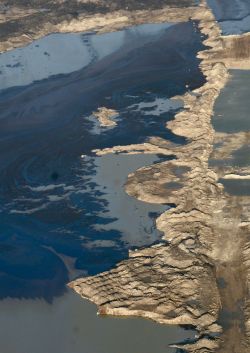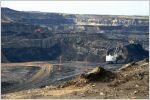A vigorous debate is occurring in the U.S. over the use of oil from oilsands and particularly about a proposed pipeline, the Keystone, that would transport that oil from Alberta to the U.S. Gulf coast. As the debate unfolds, an appropriate question to be asking is: How should Canada respond?
The view from Washington
 A few days ago, one of the most powerful members of the U.S. Congress House of Representatives Committee on Energy and Commerce, Chairman Henry Waxman, issued a letter expressing concern that the proposed Keystone pipeline "would have a major adverse impact on the carbon intensity of U.S. transportation fuel." Less than a month earlier, 50 members of the U.S. Congress issued a similar letter stating that "numerous scientific studies have found tar sands oil to produce much higher lifecycle greenhouse gas emissions than conventional oil." The letter came at the same time John Podesta, former Chief of Staff to President Bill Clinton and friend of the Obama administration, delivered a blistering speech suggesting "oil extraction from tar sands is polluting, destructive, expensive and energy intensive."
A few days ago, one of the most powerful members of the U.S. Congress House of Representatives Committee on Energy and Commerce, Chairman Henry Waxman, issued a letter expressing concern that the proposed Keystone pipeline "would have a major adverse impact on the carbon intensity of U.S. transportation fuel." Less than a month earlier, 50 members of the U.S. Congress issued a similar letter stating that "numerous scientific studies have found tar sands oil to produce much higher lifecycle greenhouse gas emissions than conventional oil." The letter came at the same time John Podesta, former Chief of Staff to President Bill Clinton and friend of the Obama administration, delivered a blistering speech suggesting "oil extraction from tar sands is polluting, destructive, expensive and energy intensive."
Clearly, concerns are mounting in the U.S. over the impacts of oil sands and our direction on climate change. Are these U.S. decision-makers ill informed? Or is it that the U.S., in the wake of the BP oil spill, is now asking tougher questions about its reliance on Canadian oilsands? Undoubtedly, questions will continue to be raised about the environmental impacts associated with a continued dependence on oil.
Just as undoubtedly, Canada's relationship with the U.S. will continue to be an important one. U.S. energy policy will continue to influence and be influenced by Canada's energy policy. This is one of the reasons the Pembina Institute opened an office in Washington – we realize the significance of Canada-U.S. relations.
Just as clear though, are the rising tensions over Canadian oil sands. While the U.S. begins to question the potential risks, the Alberta and Canadian governments, along with oilsands producers are responding.
Government and industry go on the defensive
 Indeed, the growing scrutiny over oilsands in the U.S. isn't coming without push back. Last week, the Alberta government paid for a $55,800 advertisement in the Washington Post defending the oilsands as "a safe, reliable and responsible energy [source]." Environment Minister Jim Prentice is, in the same vein, arguing that Canada already has the highest possible environmental standards in face of growing international scrutiny.
Indeed, the growing scrutiny over oilsands in the U.S. isn't coming without push back. Last week, the Alberta government paid for a $55,800 advertisement in the Washington Post defending the oilsands as "a safe, reliable and responsible energy [source]." Environment Minister Jim Prentice is, in the same vein, arguing that Canada already has the highest possible environmental standards in face of growing international scrutiny.
Meanwhile, The Canadian Association of Petroleum Producers (CAPP) has just issued a full menu of print and television advertisements complimenting their other ongoing public relations efforts across Canada and the U.S. In a recent blog, my colleague Simon Dyer, corrected some of the claims in CAPP's "Alberta is Energy" campaign and suggested that PR campaigns won't address oilsands impacts to air, land or water.
Distilling the truth
Amidst the war of words about oilsands impacts, the truth is sometimes lost and no doubt, some people are getting a little confused. Todd Hirsch, an economist with ATB financial, suggested in a recent column that both corporations and "environmental lobbyists" are only telling half-truths; one telling a story of economic bonanza and the other telling a story of environmental apocalypse.
 For example, Hirsch raised doubts over the validity of Pembina's recent fact sheet on in situ extraction techniques, which states greater greenhouse gases (GHG) emissions per barrel of bitumen produced than that of surface mining. Based on solid research, even the Cambridge Energy Research Associates (a resource used by many oilsands operators) agrees in situ has higher GHG emissions. Hirsch failed to provide evidence for his doubts.
For example, Hirsch raised doubts over the validity of Pembina's recent fact sheet on in situ extraction techniques, which states greater greenhouse gases (GHG) emissions per barrel of bitumen produced than that of surface mining. Based on solid research, even the Cambridge Energy Research Associates (a resource used by many oilsands operators) agrees in situ has higher GHG emissions. Hirsch failed to provide evidence for his doubts.
He also raised doubts that "the tailings ponds problem is actually getting worse, rather than better." Again, he failed to refute the evidence that indicates tailings are growing at a rate of 200 million litres, or 80 Olympic-sized swimming pools, every day. Nonetheless, he raised doubt.
What Canadians want
The Canadian public may or may not be confused by all of this information but they are clear about their concerns. According to a CAPP survey of Canadians, the vast majority, when considering a list of six health, environmental and wildlife impacts of oilsands, rated the challenges as "very significant" or "pretty significant."
The public must distill through a lot of information to obtain factual and truthful information about the oilsands. Fortunately, it seems most Canadians can separate fact from fiction.
Reducing environmental impacts
As the debate in Canada and the U.S. grows, there is one thing that remains constant: an interest from the Canadian public to reduce oilsands impacts.
We've published several reports outlining specific actions that would address such air, land and water impacts – some of these measures coming straight from industry's own best practices.
But as with many environmental issues, the onus is on both industry to employ best practices for responsible development and government to create a regulatory system that raises the bar and ensures compliance. Without a concerted effort by both parties, little progress can be made. While some small steps have been taken, they are far outweighed by the growing amount of toxic tailings, lost caribou habitat and wetlands as well as growing greenhouse gas emissions.
Taking responsibility
It will remain challenging for the public to sort through the barrage of information coming out on oilsands. For the Pembina Institute, this is not a lobby effort. There is a substantial volume of factual information that verifies the oilsands have a significant environmental footprint. Thousands of hours have been dedicated to careful research with an eye to specifically outlining actions that can be taken to reduce this environmental footprint. Unfortunately, the vast majority of the actions we have identified to reduce the environmental footprint have not been adopted.
These are actions that should be advanced forcefully by the Governments of Canada and Alberta with the full support of industry. When meaningful action begins to occur, we trust the public – both in the U.S. and Canada – will notice. Lack of meaningful action will also, no doubt, be noticed.
Danielle Droitsch was the director of U.S. Policy at the Pembina Institute until 2011.



